When it comes to city passes and travel cards, it’s usually fairly easy to figure out whether they would be worth it for you or not. For things like the Paris Pass or London Pass, they have a list of the most popular attractions and how much they cost, right there for you to see. The Swiss Travel Pass, however, is shrouded in mystery, or at least it was until I spent several days tracking down all of the prices and benefits.
A great many of the visitors and commenters on my popular page about where to go in Switzerland on a short visit are wondering whether the Swiss Travel Pass is a good deal. Embarrassingly, I’ve always had to answer that I found the pass too confusing to confidently advise people on. Now that has all changed, after literally days of research.
Note: This article was last updated in February, 2024.
Disclosure: This is a reader-supported website and some of the links are affiliate links where a small commission is paid to help keep this site going, but the cost to visitors is the same. The Swiss Travel Pass seems quite expensive at first, so it felt like it might be hard to get your money’s worth out of it. As it turns out, it’s pretty easy to get good value, and it’ll be a good deal for many visitors.
New in 2024
Prices increased an average of 5.9% from 2023 on the Swiss Travel Passes, but the Half Fare Card remains at CHF120, which is where it’s been for many years. Train fares in the country increased by similar percentages so the value is basically unchanged. There were no other notable changes to service or the included attractions and train routes.
>>>Buy the Swiss Travel Pass online
Where to stay in Interlaken and the Lauterbrunnen Valley
Since most people reading this will be visiting the Interlaken area and I get so many questions about it, I decided to write a detailed guide on which area to stay in while visiting this area.
>>>Where to stay in Interlaken or the Lauterbrunnen Valley in Switzerland
I included many huge photos in that post so readers will be able to get a better idea of what each place looks like and they are worth a look by itself.
>>>Lucerne or Interlaken: Which to visit and how long to stay?
The article just above will help you decide on how long to spend in each of Switzerland’s two best tourist areas.
Are you 100% sure where you want to go in Switzerland? This should help
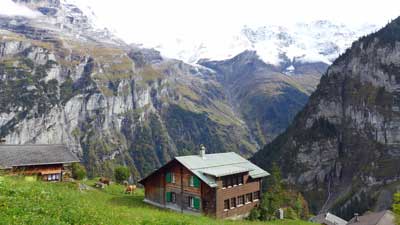
Zurich and Geneva are pleasant but dull. The good news is that Switzerland is packed with amazing sights and none of them are the big cities. If you aren’t 100% locked in yet, please read the article below and I think you’ll enjoy it.
Is the Swiss Travel Pass a good deal? Here's the short version
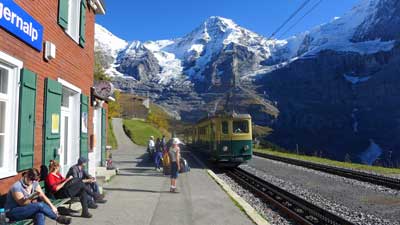
The bottom line is that the scenery, train journeys, and cable car rides in Switzerland are stunning and not found anywhere else in the world. They are also quite expensive if you pay for them one at a time. So no matter how you visit Switzerland, you are going to be paying quite a bit, or skipping the absolute best things that you’ve come there to see.
With good planning it’s quite easy to get great value out of a Swiss Travel Pass, but it might be a poor choice for those who don’t like to plan ahead. You can easily do a scenic train ride and a cable car in the same day, and still have time to do a scenic hike in the process.
First class or second class? Good news for most people
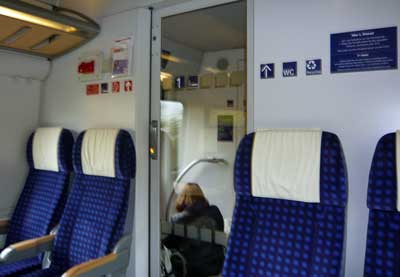
That said, Swiss Trains are literally the nicest in Europe and even the Second Class seats and carriages are nicer and roomier than trains in neighboring countries. The First Class seats are larger and nicer with only 3 across the cabin instead of 4, but honestly Second Class is perfectly comfortable for almost everyone.
Again, First Class on European trains like this is generally popular with business travelers where the company is paying and they need to get work done during the ride, and also senior citizens who don’t want to worry about a carriage full of backpackers. For most of the rest of us, Second Class is more than comfortable enough and the seat width and legroom compare to business-class airline seats. I’m a big and tall guy and I almost always travel in Second because it’s plenty comfortable enough and all the seats arrive at the same time anyway.
The longer you'll be in Switzerland, the better deal a Swiss Travel Pass will be
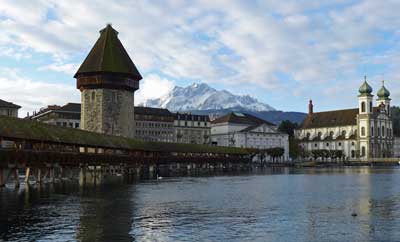
In other words, if you are staying 5 days or fewer, you have to do the math to determine your best option. But if you are spending even 6 or 7 days in Switzerland then the 6-day or 8-day Pass is almost guaranteed to be a great deal and your best choice. Once you have a Swiss Travel Pass you’ll absolutely love the ability to just hop on any train (excellent trains, always on time) and most boats and cable cars without having to worry about the cost. The per-day cost of an 8-day Pass even if you only use 6 of those days is about CHF65, and Switzerland is filled with amazing train rides and boats and cable cars that can get you that much value before noon each day.
Schilthorn (50% discount) and Jungfraujoch (25% discount) are cheaper with a Swiss Travel Pass
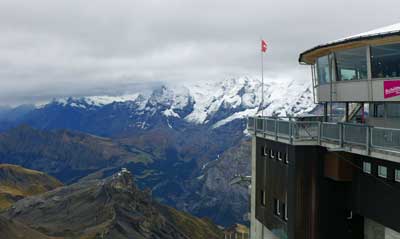
Both of those peak experiences are extraordinary and different from each other. Even so, compared to Jungfraujoch, Schilthorn is also faster and more comfortable on the way up and down. You can enjoy an excellent visit to Schilthorn in 4 hours or so (or a bit longer if you eat at the spinning Piz Gloria restaurant at the top), while a visit to Jungfraujoch requires closer to 6 hours.
NOTE: Schilthorn closes for maintenance for a week or two in late November most years.
Consider the Swiss Half-Fare Card instead
If you AREN’T going to be doing two or more of the long (and expensive) scenic train trips, you will get much better value out of the Swiss Half-Fare Card, which is explained a bit below.
Mt Rigi, near Lucerne, is 100% covered by the Swiss Travel Pass
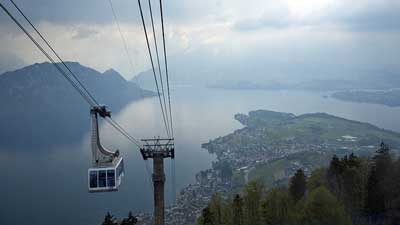
Is a Swiss Travel Pass right for you?
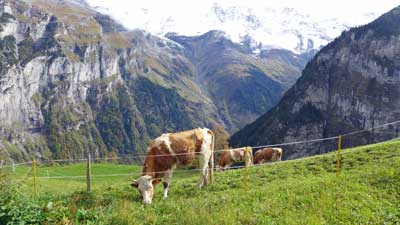
Most people only visit Switzerland for 5 or 6 days at most, so the 3-day and 4-day passes are the ones to focus on. But if you are staying for 8 days or more, those longer passes are almost certainly a great deal for you.
Long story short, if you plan on doing 2 of the more expensive scenic trains and the Jungfraujoch railway or the Schilthorn cable car, then the pass will save you money. Switzerland is expensive, but it’s worth it, and the travel pass can help make it a bit more affordable.
What the Swiss Travel Pass includes
- Free rail travel on normal trains and most scenic trains
- Discounted travel (about 50%) on popular tourist mountain trains
- Discounted travel (about 50%) on popular tourist cable cars
- Free travel on public transport in 75 towns and cities
- Free entry to around 500 museums in Switzerland
The Swiss Travel Pass covers the fare on the most popular scenic and panoramic trains. You can choose a normal seat in a regular carriage for no additional cost, but there is a supplement of CHF8 to CHF49 for a reserved seat in one of the special panorama carriages on these routes.
Prices of the 2024 Swiss Travel Pass
1st Class
- Adult 3-day Pass: CHF389
- Youth (4 to 25) 3-day Pass: 274
- Adult 4-day Pass: 469
- Youth (4 to 25) 4-day Pass: 330
- Adult 6-day Pass: 602
- Youth (4 to 25) 6-day Pass: 424
- Adult 8-day Pass: 655
- Youth (4 to 25) 8-day Pass: 469
- Adult 15-day Pass: 723
- Youth (4 to 25) 15-day Pass: 512
2nd Class
- Adult 3-day Pass: CHF244
- Youth (4 to 25) 3-day Pass: 172
- Adult 4-day Pass: 295
- Youth (16 to 25) 4-day Pass: 209
- Adult 6-day Pass: 379
- Youth (16 to 25) 6-day Pass: 268
- Adult 8-day Pass: 419
- Youth (16 to 25) 8-day Pass: 297
- Adult 15-day Pass: 459
- Youth (16 to 25) 15-day Pass: 328
Swiss Travel Pass Flex
This version costs a bit more, but you don’t have to use the travel days consecutively. It’s a great option for anyone who won’t be taking longer train rides each day.
- Adult 3 Flex days in 1 month (1st Class): CHF445
- Adult 3 Flex days in 1 month (2nd Class): 279
- Adult 4 Flex days in 1 month (1st Class): 539
- Adult 4 Flex days in 1 month (2nd Class): 339
- Adult 6 Flex days in 1 month (1st Class): 644
- Adult 6 Flex days in 1 month (2nd Class): 405
- Adult 8 Flex days in 1 month (1st Class): 697
- Adult 8 Flex days in 1 month (2nd Class): 439
- Adult 15 Flex days in 1 month (1st Class): 755
- Adult 15 Flex days in 1 month (2nd Class): 472
Where to buy the Swiss Travel Pass
The Swiss Half-Fare Card – A better option for many visitors
Far less confusing than the Swiss Travel Pass, you can instead get a Swiss Half-Fare Card, and it will be a better deal for many travelers. The price is lower and it’s much easier to do the math, and the discounts are greater on some things as well.
- Swiss Half-Fare Card for 30 days: Adults – CHF120 or US$129
What you get:
Those who buy the Swiss Half-Fare Card will get 50% discount on all trains, buses, and boats in Switzerland for up to 30 days, as well as 50% off all public transportation in 75 cities and towns.
>>>Buy the Swiss Half-Fare Card
Why the Half-Fare Card is a better deal for many
While the Swiss Travel Pass is a great deal for those doing many of the expensive scenic journeys and mountain sights within a few days, it’s not good value for those who are doing fewer of the expensive trips and/or those who are staying longer. Also, the Swiss Travel Pass only provides a 25% discount on the amazing Jungfraujoch Railway, which costs between CHF120 and CHF224 return depending on your starting point, while the Half-Fare Card provides a 50% discount.
The math is simple as well. You can just add up the cost of the trains, boats, and buses you’ll be taking while in Switzerland, and if the total is more than CHF240 or so, the Half-Fare Card will save you money.
Example itinerary:
- Zurich to Interlaken train (2nd Class): CHF50
- Schilthorn Cable Car: CHF112
- Jungfraujoch railway from Interlaken: CHF205
- Interlaken to Lucerne train (2nd Class): CHF33
- Mt Rigi roundtrip from Lucerne: CHF84
- Engelberg (near Lucerne) to Mt. Titlis Cable Car: CHF92
- Lucerne to Zurich train (2nd Class): CHF25
Total per person: CHF601
Total with Half-Fare Card (including price of card): CHF420.50
It would be tough to do all of those things in 4 days, although it is possible. If you bought a 4-day Swiss Travel Pass here is how it adds up:
4-Day Swiss Travel Pass: CHF259
Supplements for Schilthorn, Jungfraujoch, and Mt. Titlis: CHF203.25
Total cost: CHF462.25
Bottom line on the Swiss Half-Fare Card
Since the Half-Fare Card lasts 30 days and provides a larger discount on Jungfraujoch, it is better value for visitors who want to include that scenic top-of-Europe rail journey on their trip. The discounts also add up more quickly on Schilthorn and Mt. Titlis trips, just to name two examples, and you don’t have to take many longer rail journeys to get value out of the Half-Fare Card.
Swiss Saver Day Pass (A one-day unlimited travel pass)
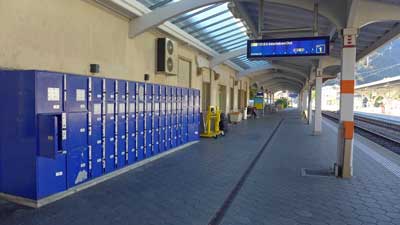
If you buy the Saver Day Pass at least 21 days in advance (and up to 60 days in advance) the 2023 cost is:
- 2nd Class (with Half Fare Card): CHF29
- 1st Class (with Half Fare Card): CHF82
- 2nd Class (with no Half Fare Card): CHF52
- 1st Class (with no Half Fare Card): CHF97
Once you research the normal cost of Swiss train fares you’ll see that the above prices are a very good deal for anyone riding more than 150 kilometers or so in a day. If you are just going, for example, from Zurich to Lucerne or Interlaken on a day, it’ll be cheaper to just buy that ticket individually. But if you are going from Geneva or Montreux to Interlaken or Lucerne then the Saver Day Pass will be much cheaper. Better still, you can use a Saver Day Pass to go from Interlaken to Geneva and back on the same day on the Goldenpass line and returning on the faster train through Bern, and it will still all be included for free.
If you don’t buy a Saver Day Pass at least 14 days in advance it’s more expensive, and if you only buy 1 to 3 days in advance it’s VERY expensive, so the key is to buy early. This is all confusing, but the Saver Day Pass should be a great option for many people only in Switzerland for one to three days.
Popular Swiss panorama scenic trains
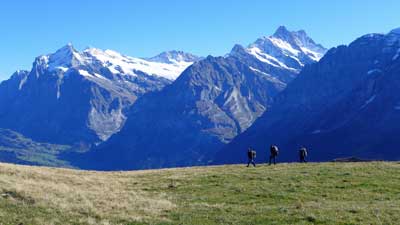
- Glacier Express
- Route: Zermatt to St. Moritz
- Train type: Panorama
- Journey time: 8 hours 3 minutes
- Distance: 291km
- 1st Class fare: CHF272
- 2nd Class fare: CHF159
- Compulsory seat reservation fee: CHF44 or 49
- Supplement for Swiss Pass holders: 13 to 33 for panorama carriage
- Bernina Express
- Route: Chur to Tirano and Lugano
- Train type: Panorama and bus
- Journey time: 4 hours 13 minutes and 3 hours 10 minutes
- Distance: 148km and 90km
- 1st Class fare: CHF113
- 2nd Class fare: CHF66
- Compulsory seat reservation fee: CHF32
- Supplement for Swiss Pass holders: 10 to 14 for panorama carriage
- GoldenPass Line
- Route: Lucerne to Montreaux
- Train type: Panorama
- Journey time: 5 hours 8 minutes
- Distance: 191 km
- Prestige Class fare: CHF131
- 1st Class fare: CHF96
- 2nd Class fare: CHF56
- Supplement for Swiss Pass holders: 8 to 15 for panorama carriage
- Gotthard Panorama Express (formerly Wilhelm Tell Express)
- Route: Lugano or Locarno to Lucerne
- Train type: Panorama and boat
- Journey time: 5 hours 21 minutes
- Distance: 182 km
- 1st Class fare: CHF164
- 2nd Class fare: CHF135
- Supplement for Swiss Pass holders: 39 to 49 for panorama carriage
- Swiss Chocolate Train
- Route: Montreux to Broc round trip
- Train type: Panorama or First Class
- Journey time: X hours X minutes
- Distance: 82 km
- 1st Class fare: CHF99
- 2nd Class fare: 89
- Supplement for Swiss Pass holders: 39
Popular Swiss scenic and theme trains
The scenic trains below are also extremely popular as sightseeing journeys rather than just as transportation, but can be used as both.
- Jungfraujoch round trip
- Route: Interlaken to Jungfraujoch
- Train type: special mountain train
- Journey time: 4 hours 41 minutes, round trip, plus time on top
- Distance: 73 km
- 1st Class fare: N/A
- 2nd Class fare: CHF224
- Supplement for Swiss Pass holders: 147 (so, a saving of CHF77)
- Gornergrat Railway
- Route: Gornergrat Railway
- Train type: Cog railway
- Journey time: 44 minutes return
- Distance: 10 km
- 1st Class fare: N/A
- 2nd Class fare: CHF90
- Supplement for Swiss Pass holders: 45
- Rigi round trip
- Route: Lucerne to Rigi
- Train type: Cog railway
- Journey time: 3 hours 25 minutes, plus time at the top
- Distance: 58 km
- 2nd Class fare: CHF78
- Supplement for Swiss Pass holders: None (this one is free with the pass)
- Mt Rigi Excursion (one-way and walk down)
- Route: Lucerne to Mt Rigi
- Train type: cogwheel train and/or cable car
- Journey time: 45 minutes up
- 1st Class fare: N/A
- 2nd Class fare: 49
- Supplement for Swiss Pass holders: 0
- Lotschberg Mountain Route and Centrovalli
- Route: Bern to Locarno
- Train type: Narrow gauge
- Journey time: 4 hours 40 minutes
- Distance: 212 km
- 1st Class fare: CHF158
- 2nd Class fare: CHF90
- Supplement for Swiss Pass holders: 5
- Jura round trip (Watchmaking Tour)
- Route: Neuchatel through Jura
- Train type: Regular
- Journey time: 3 hours 0 minutes
- Distance: 143 km
- 1st Class fare: CHF168
- 2nd Class fare: CHF108
- Supplement for Swiss Pass holders: 0
- Pre-Alpine Express
- Route: St. Gallen to Lucerne
- Train type: Regular
- Journey time: 2 hours 15 minutes
- Distance: 146 km
- 1st Class fare: CHF83
- 2nd Class fare: CHF47
- Supplement for Swiss Pass holders: 0
- Jura Foot Line
- Route: Basel to Geneva
- Train type: Regular
- Journey time: 2 hours 40 minutes
- Distance: 248 km
- 1st Class fare: CHF132
- 2nd Class fare: CHF75
- Supplement for Swiss Pass holders: 0
Popular Switzerland cable car rides
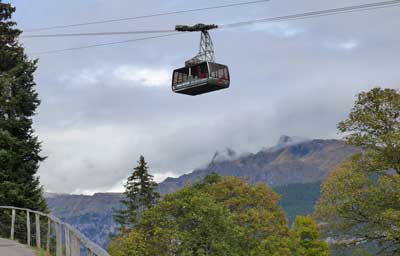
- Schilthorn
- Route: Stechelberg (Lauterbrunnen) to Schilthorn
- Train type: cable car
- Journey time: 1 hour
- 2nd Class fare: CHF108
- Supplement for Swiss Pass holders: 54
- Engelberg to Mt. Titlis cable car
- Route: Engelberg to Mt. Titlis
- Train type: cable car
- 2nd Class fare: CHF96
- Supplement for Swiss Pass holders: 46
The Swiss Travel Pass also includes free museum admission, but…
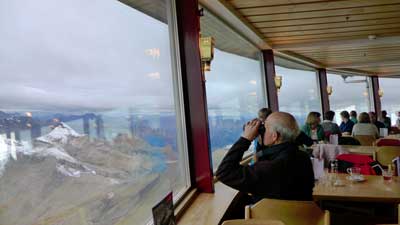
The problem is that the museums are only free on valid travel days, and almost no one would visit more than one or two museums with a Swiss Travel Pass. The trains and cable cars are so expensive that the pass gives very good value to cover those, so you don’t want to waste precious sightseeing time walking through a museum that only costs CHF10 anyway.
In other words, calculate the value of a Swiss Travel Pass on the travel savings only, and if you visit a museum here or there, then great. Most people are better off trying to squeeze in an additional train ride each day, and ignoring the museums. Switzerland is all about the outdoor scenery. As nice as the museums may be, they are not why you are there.
The pass includes free public transport in most Swiss cities
Similar to the free museum part of the offer, it’s best to ignore or minimize the value of free public transportation. It could be helpful in Zurich, but in most other Swiss tourist towns you won’t need much public transport. In fact, in Interlaken, each hotel or hostel guest automatically gets a card for free public transportation within the town (including between the two train stations).
So you might use a ride or two each day on public transport, but that won’t add up to much in terms of value of your Swiss Travel Pass.

Hi Roger
Great article but hoping I might be able to pick your brain regarding the Swiss passes. We plan on travelling to Switzerland for 6 days in June this year. We have already purchased tickets on the Bernina Express from Tirano to St Moritz before we read all the information on the passes that are available. From St Moritz we want to travel to Zermatt & then to Interlaken with a trip to Jungfraujoch. We are still deciding whether to go the Glacier Express or local trains. Do you think it would be worth purchasing a pass given we have already purchased tickets for that first leg? I am a little confused on what pass to look at & would appreciate any advice you have to offer.
Shelley,
This is a tricky one. Are the Bernina tickets refundable perhaps? If so it’s probably better to do that and buy a Swiss Travel Pass. At the very least it would have been nice to buy a Half Fare Card and then use that on those tickets and the other ones you’ll buy. Maybe you could contact them and ask if it’s possible still?
If not then you are probably best off just getting a Half Fare Card and using it on your remaining trips. It is valid on the Glacier Express as well. It’s hard to know whether you should go on the official train and the panoramic carriages or not. That’s partly because the scenery is just amazing even on the local trains and the views are pretty good just out the normal windows. Good luck with that and let me know if you have any other questions. -Roger
Thanks so much for a very comprehensive article.
We are planning a 4-day trip to Switzerland the middle of April. I am hoping you can advise us (there is 4 of us, 3 are seniors) to buy or not buy the Swiss Travel pass. And how to use the pass if we were to buy it.
We will stay in Kriens, near Lucerne.
Day 1. Lake Lucern, to Mt. Rigi, Rigi Kulm, Rigi Kaltbad, and down via the cable car back to Lucern. Return to Kriens.
Day 2. Take the Bernina Express, maybe using the regional train because we heard that it allows us to take pictures better with the open windows and the flexible stops at the stations. Return to Kriens.
Day 3. Lauterbrunnen. Back to Kriens
Day 4. Zurich and Lindenhof Hill, visit Kunsthaus Art museum.
I have checked the prices for these main routes. I just don’t know if there are shorter connections that we need to pay since we are staying in Kriens.
Also, I am concern about the possible confusion with buying tickets as needed in dealing with the ticket machines in Swizerland.
I am hoping that these questions and concerns are within your scope of comfort to respond. It feels a bit much to ask. So, thanks so much.
DN Nguyen,
This looks like a really well planned trip. Your options will be to buy the 4-day Swiss Travel Pass or just a Half Fare Card for each person. The Half Fare Card would pay for itself after two days or so because trains and tourist attractions are pretty expensive without it.
Without going through and adding all of the parts up myself it’s tough for me to know which is best. Another thing to consider is that, especially on your visit to Lauterbrunnen, there are MANY great options in the Lauterbrunnen Valley that are fully covered by the Swiss Travel Pass, so it depends on how many of those you’d do. For example, there’s a bus from the Lauterbrunnen train station that is there waiting when every train gets in and it can take you to nearby Stechelberg and drop you at the cable car stop. That cable car takes you quickly up to Gimmelwald and from there you can walk across the platform to board the next cable car up to Murren. Once in Murren you can walk through the gorgeous town and then down the stunning path to Gimmelwald and then back to the cable car station for the ride down. It’s an absolutely amazing trip and not strenuous because it’s all flat or downhill. I highly recommend it whether you get a pass or not, but if you DID get a pass it’s all included with no tickets. You just show your pass and hop aboard. There are also cable cars in nearby Wengen and a train to Grindelwald and those are included as well.
A 4-day Swiss Travel Pass would end up costing about US$85 per day compared $34 per day for the Half Fare Card. If you are tight on money you can save by getting the Half Fare Card and not doing too many of the cable cars and boat rides and tourist trains, but if you can afford the Swiss Travel Pass I think it’s worth it because you’ll find plenty of included things to use it on each day. Also, as you mention, buying individual tickets can be a bit stressful, especially at first. There are indeed machines in most places and the ticket booth people do speak English, but with the Pass you either just hop on and find a seat, or show them your pass (for cable cars and boats) and they will just open the gate and you are in.
I hope this helps and let me know if you have any other questions. -Roger
First class sight, well done
Comment*Hi Roger. Very much appreciate your research and this very informative article. We will be traveling from Munich to Zurich on DB train on May 15th which we purchased a ticket directly.
On May 15 we will then travel from Zurich to Murren and will be in Murren departing on May 19th (4 nights). Considering the 4 day Swiss pass to use for travel from Zurich to Murren, travelling around Murren/Lauterbrunnen, the Schiltorn and over to the Jungfrau. Do you feel the pass makes the most sense.
If so, how do we make reservations using our pass? Thank you in advance for your reply.
Cheryl,
Actually, if you will be spending pretty much your entire trip in the Interlaken area you might save a bit of money with the Bernese Oberland Pass. It’s similar to the Swiss Travel Pass but it’s a bit cheaper because it’s only valid in that area and the areas around it. Have a look at the details, but I think it might be your best option. It wouldn’t pay for the entire ride from Zurich, but it should cover some of it, depending on when you validate the pass.
As for how to use them, it’s nice because you can literally just hop on board any train that it covers and find a seat. At some point the ticket-taker will come through asking for your ticket and you just show them the pass instead. For things like cable car rides or boat rides you just wait in the normal queue and when you get up to the window you just show them the pass and they will give you a ticket or voucher of some kind. Let me know if you have any other questions. -Roger
Hi, Roger.
Really appreciate this very informative article. My husband and I are planning to visit Switzerland on June 14-20. We haven’t decided on our itinerary yet but I love small villages, falls, and lakes. Do you think it would be wise to buy a Swiss Travel Pass? We also want to see Zermatt and the famous Matterhorn.
Thanks in advance for your valuable reply.
Cheers,
Cathy
Cathy,
The 6-day Swiss Travel Pass should be perfect for your visit. It can be harder to justify on a 3-day or 4-day visit, but by the time you get up to 6 full travel days the cost is only about CHF63 per day and you can save that much before lunch on most days. The trains in Switzerland are quite expensive (almost everyone in the country uses a Half Fare Card) so if you go between, say, Lucerne and Interlaken, that will cost about CHF50 or so and then once there you’ll be riding on cable cars and boats and special mountain trains that are almost all covered by the pass.
The other option would be to get a Half Fare Card for CHF120 and then get everything at half price, but you’d almost certainly spend more that way or you’d skip quite a few things to keep the costs down. So if you can afford the full pass I highly recommend it. Let me know if you have any other questions. -Roger
CHi Roger, thank you for your Swiss Travel pass article – very helpful. We are three adults visiting Switzerland for 6 nights in May 2024, with 5 full days sightseeing and I’m wondering what pass would best suit us. We will spend all 6 nights in Lucerne.
If I could just run a schedule past you, could you let me know what pass you would recommend?
Day 1 Luzern to Interlaken to Jungfraujoch, to do the Jungfraujoch round trip.
Day 2 Mt Titlis round trip
Day 3 Lucerne to Zurich – river cruise and Lindt Museum – return
Day 4 Luzern to either – Bern or Geneva – return
Day 5 Luzern to Mt Rigi – Boat and cable car rides. Return
Thanks, Michael
omment*
Michael,
This looks like a great trip and I’m jealous. Still, I’ll mention one thing that I mention pretty often in that Switzerland’s cities are all surprisingly dull and Switzerland’s Alpine towns and view and activities are arguably the most beautiful and interesting in the world. Normally when I visit a country I’ll start with a few days in the largest city and then if I have time I’ll go elsewhere, but I don’t recommend that in Switzerland. Bern is small, pretty, and charming so it’s the one I DO recommend. I think spending more time in the Interlaken area would be great. That said, if you did your trip exactly as you listed here, I’m sure you’d have a great time.
As for the passes I’d definitely go with the 6-day Swiss Travel Pass. Basing yourself in Lucerne (nice idea) also means that you’ll be riding on trains and cable cars and boats every day and the pass will pay for itself halfway through your trip. It’s kind of a shame that they don’t sell a 5-day version, but in this case I wouldn’t worry about that since you’ll be using it so much for each of your days. The other options like getting a Half Fare Card and then buying Saver Day Passes would get complicated and probably cost more as well. I hope this helps and let me know if you have any other questions. -Roger
Comment*
Hi Roger
we are 3 adults and will be spending 12 days in Switzerland in April 2024, landing into Zurich.
IS renting a car better than the Swiss rail pass or the half fare pass. We want to visit Zurich, geneva, Interlaken, Montreux, grindelwald, lucerne.
Would appreciate your comment on this and Also if u could suggest an itenary for the same which is economical
thanks in advance
Himanshu,
If I were you I’d definitely plan on each person getting a 15-day Swiss Travel Pass and then planning your itinerary based on things that are included in the pass. Switzerland is one of the better European countries for driving because the roads are well maintained and well planned, but parking is almost never cheap or easy, especially in the larger cities. And you definitely wouldn’t want to drive around in the larger cities while sightseeing, so the best case scenario is that you’d find a garage to pay maybe CHF40 per day until you are ready to drive to the next place.
Speaking of cities, the Swiss cities are all very expensive and actually kind of dull compared to most famous cities in nearby countries. And since the scenery outside the cities is so amazing in the whole country, I really don’t recommend spending more time in cities than you are sure you’ll find interesting. If there are specific attractions in places like Geneva or Montreux that you are really anxious to see, then spend some days in those places. But honestly maybe 90% of the “magic” of Switzerland is the small towns and mountains and lake and views, and those areas tend to be a bit cheaper as well.
You could substitute a couple days in Zermatt to see the Matterhorn instead of Geneva, and maybe a day or two in the Appenzell area instead of Montreux. Actually, if you buy a Swiss Pass and do a scenic train ride that goes through Montreux or Geneva, those can be enjoyable and those are both lake cities that are nice to look at. It’s just the attractions in the cities aren’t as interesting as you’d expect in Europe, and the hotels and restaurants tend to be extremely expensive.
I’m not sure if that is helpful for you or not, and I’m happy to help if you have other questions. I can even help more if you are certain you want to drive and visit all the cities. -Roger
Hi Roger, thank you for the informative article.
We will be visiting Switzerland for 11d/10n and will be visiting Lucerne, Interlaken and Zermatt. We will be in Zurich for the last 3 days of our visit. Do you think it’s better for us to buy a 8 day pass or 15 day pass? Your advice would be greatly appreciated!
Thanks, Ryan
Ryan,
The good news is that the difference in price of the 8-day and 15-day passes are only CHF40 in 2nd Class and CHF58 in 1st Class so I’d definitely get the 15-day pass. Even if you only use it in 9 total days the longer pass should easily pay for itself and it’ll just be easier than having to try to save money on any extra days. Have a great trip!
Hi Roger. My wife and I are planning on visiting Switzerland for 5 days. We will be flying into Zurich, stay in Lucerne one night, Interlaken two nights (or Zermatt and Interlaken one night each), then return to Zurich for one night. Do you think a full Swiss Travel Pass for 6 days is the better option compared to the half price pass? We will be doing our best to visit as many of the mountains and lakes we can.
Hae-In,
It won’t necessarily be the cheapest way to visit Switzerland, but I agree that getting the 6-day full Swiss Travel Pass will be the best. Even if you only use it 5 days, you will be spending all of your time in places where you’ll be able to use it daily on the expensive attractions and train rides. Again, if you were just at the edge of your budget it might not be wise, but if you can afford it you’ll get a LOT of use out of it and it will make your trip much more carefree. There is something really nice about being able to walk into a train station and hop on a US$75 train just by showing your pass. The alternative is to buy the Half Fare Card and then also buy a US$37.50 ticket each time you take a train or boat or cable car.
On the shorter visits of 3 days it can be a bit tougher to justify the full pass, but using it for 5 solid and action-packed days like that I think you’ll be glad you went with the pass. Let me know if you have any other questions. -Roger
Thank you!
Comment* We are not sure what pass would work best for us “if” we are renting a car for the 15 days we will be there. We will start out in Zurich and then to Lucern, Interlaken, Grindelwald, Lauterbrunnen, Montreux, Zermatt and back to Zurich to fly home. Any help will be greatly appreciated.
Ellen,
I’m not sure I totally understand. IF you are renting a car for this trip, then you wouldn’t want or need a pass at all. I guess you’d want to at least get a Half Fare Card so all of the boats and cable cars and some tourist trains are half price, but the main reason to buy a full travel pass is to use it for free train rides all around the country. If you are driving you’d obviously not get much use out of that part.
In case you haven’t fully decided, a car is not a terrible way to get around Switzerland (although it IS a terrible way to get around most of Europe and all of Europe’s big cities), but you still might consider riding trains anyway. The trains go literally everywhere that you’d want to visit and they are famously comfortable and efficient.
Unlike most other places in Europe, Switzerland has a decent number of parking lots at the major sights, but they do tend to be expensive. If you had a group of 4 people and especially if one or more is a small child or has a mobility issue, then traveling by car can be efficient compared to trains in some cases. However, it’s also pretty stressful to be driving around in a foreign country where you probably don’t know the local languages (you’ll mostly be in the German part of Switzerland). And as mentioned, parking tends to be very expensive and difficult to find in cities (Zurich and Lucerne and Montreux) and you definitely wouldn’t want to use a car to see things within the cities so the best option is to find parking somewhere near your hotel and leave your car there until you check out. And with that in mind, having a car isn’t as helpful as it might be in, say, Orlando, Florida.
Another thing is the driver of the car won’t get to appreciate the amazing scenery nearly as much, and the passengers won’t have great views most of the time either. The highways in Switzerland aren’t nearly as scenic as the trains, except when you are on winding single-lane roads and then you really have to pull over in order to appreciate the mountains. I hope this helps and let me know if you have any other questions. -Roger